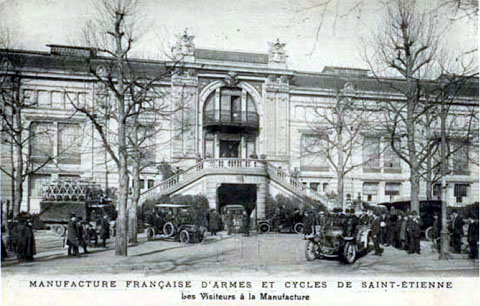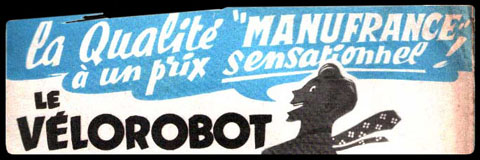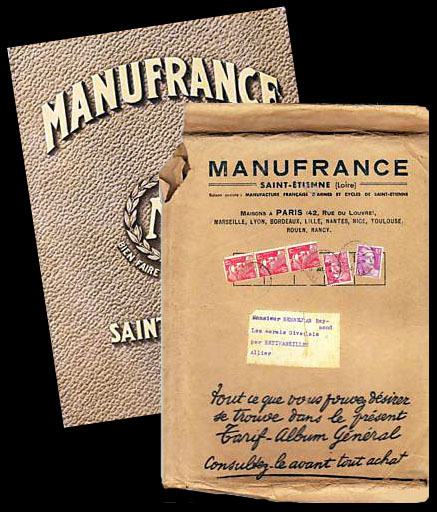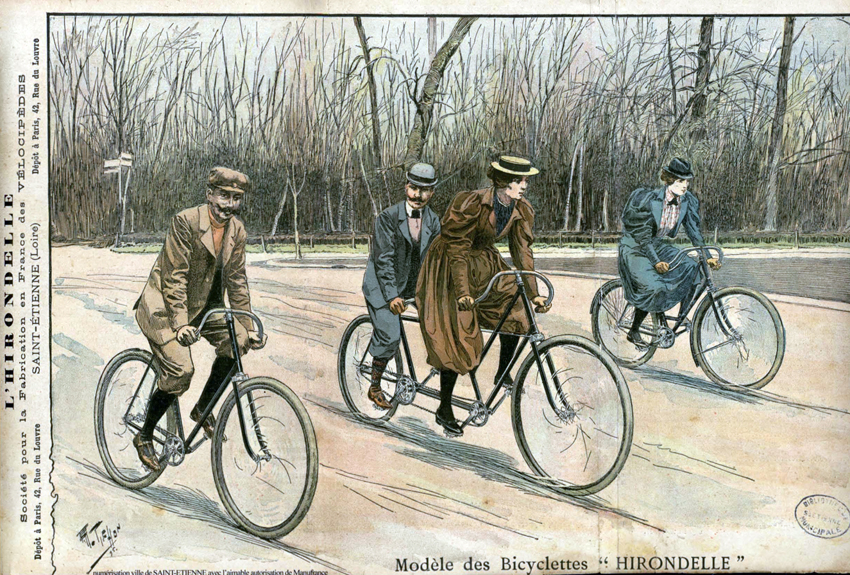MANUFACTURE D’ARMES et CYCLES de Saint-Etienne
Manufrance was France’s first mail order company, with an annual catalogue, known as la Manu. It offered a wide range of products, the most famous being guns, bicycles and sewing machines. Its TSF radio, made in 1930, had an essential role during the German occupation of WW2.
Manufrance was a pioneering company, based on a unique business model and, at least for the first half of its existence, was the leader in its field.
La Manu pre-dates the American Sears-Roebuck Catalogue, so I assume it’s the oldest mail order catalogue in the world. With the wide range of products on offer each year, it now offers us a unique glimpse into French homes over an entire century.
The bicycles section of its catalogues certainly provides (unlike any other marque) an easily accessible view of bicycles and their development from the earliest days of cycling.
*******************
BRIEF HISTORY of MANUFRANCE
1885-1985
Etienne Mimard and Pierre Blachon bought Manufacture Française d’Armes et de Tir from Mr Martinier Collin on 10th November 1885. They renamed it Manufacture Française d’Armes de Saint-Étienne.

The company rapidly expanded: by 1898 there were 1000 employees, and Etienne Mimard built a new factory (Cours Fauriel) and formed a limited company under the name Manufrance. When Peter Blachon died in 1914 he became the sole director.
There were problems in 1937, with a strike for 100 days, and the municipality of St. Etienne subsequently took over the management of the company.
After the death of Mimard, in 1944, the mayor of Saint-Etienne became the new boss of Manufrance, a novel situation, especially considering the size of the company (3800 employees by 1976) and its influence in the life of the Saint-Etienne.
After WW2, the company introduced cyclemotors and mopeds, with some success. While the country was getting back onto its feet, cheap 2-stroke motorized vehicles were needed (such as the quaintly-named Velorobot).

But advances in Japanese motorcycle design affected all European manufacturers: the effect of the innovative four-stroke Honda 50 devastated home-built moped and scooter sales.
Unfortunately, by the seventies the company was running into trouble. They did not modernise sufficiently. For example, while computers were being introduced generally, Manufrance still favoured handwritten accounts; foreign competition affected sales; too much money had been invested in creating new storage facilities.
Eventually, the company started to get behind with their orders and, in 1979, Manufrance went into liquidation. Though it was saved for a while by turning the company into a co-operative, by 1985 that too ran into trouble. Exactly one hundred years after the initial acquisition of Manufrance, the company ceased trading.
Manufrance catalogues are now collector’s items. The 1950 catalogue below is pictured with its original envelope.



You must be logged in to post a comment.